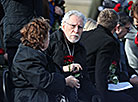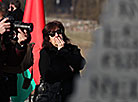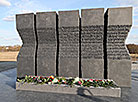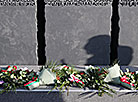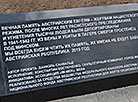The monument Array of Names in the memorial complex Trostenets
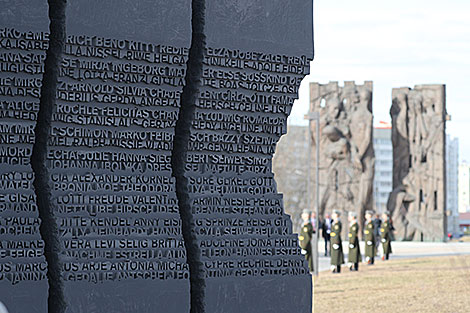
In accordance with the top-level agreements, the Austrian side built and erected the monument with the assistance of Belarusian government bodies. The author of the idea was Austrian architect Daniel Sanwald, partaking in the project was Belarusian sculptor Konstantin Kostyuchenko who is the author of the composition Gates of Memory. The Austrian government and the National Fund of the Republic of Austria for Victims of National Socialism financed the project.
The main elements of the monument are ten columns symbolizing ten trains with Austrian Jews who were brought from Vienna to Trostenets. There are names of victims (no last names) on the columns, partially eroded and faded. There is also a memorial stone with the text in Belarusian, Russian, and German. “Blessed memory to Austrian Jews who were the victims of the Nazi regime. After many years of racist persecution and oppression thousands of people were deported and from Vienna in 1941-1942 and killed in the death camp Trostenets near Minsk. We will always venerate their memory, their names will not be forgotten. The Austrian Republic. 2019,” it reads. Under the name of the monument is the Jewish word for remember.







